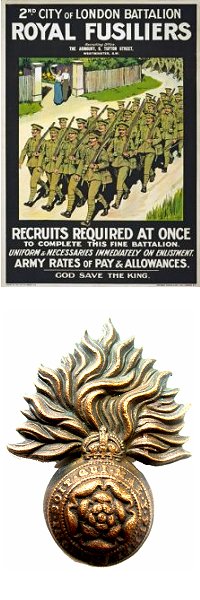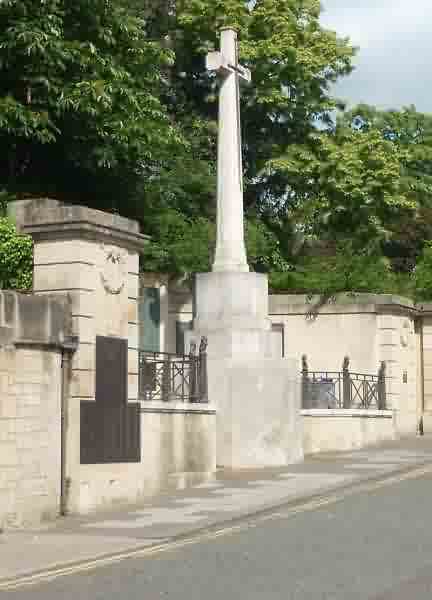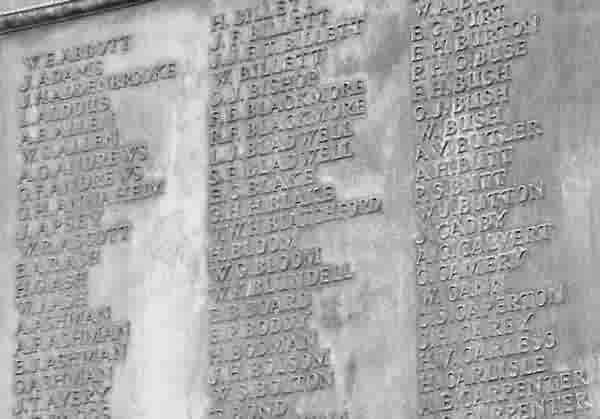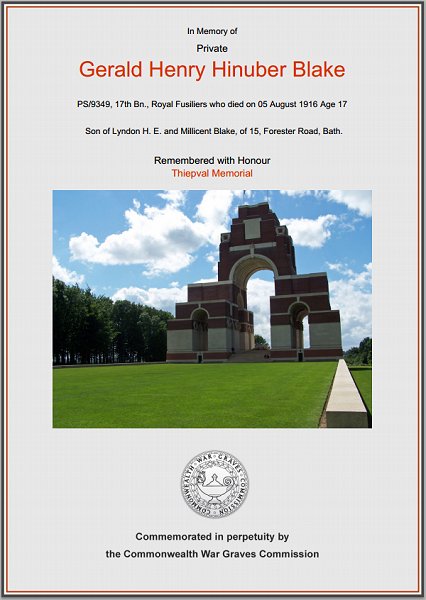yeovil at War
Gerald henry hinuber blake
Killed in action during the Battle for the Somme
Gerald Henry Hinuber Blake was born in Hendford House (today's Manor Hotel) in 1899 and baptised in St John's church on 9 July 1898. His parents were Lyndon Henry Edward Blake (1867-1939) and Millicent née Brady (1864-1947). Gerald had a brother, Cecil Lydon, who was born in Livingston, Montana, USA in 1891.
In the 1901 census two-year old Gerald was living with his aunts Caroline and Henrietta Hinuber of Hendford House with three servants while his mother, listed as Millicent Blake, was living in Bournemouth with her mother and sister, Frances and Henrietta Brady - all three of 'independent means'. There appears to be no record of a Blake / Brady marriage or a Blake / Hinuber marriage (at least in the UK) although from another record it is known that his father was Lyndon Henry Edward Blake who possibly served/worked abroad.
By the time of the 1911 census Millicent Blake was living in Bath with her two sons; 20-year old C Lyndon, a theological student, and 12 year old scholar Gerald, together with a domestic servant. Millicent was listed as married for 21 years but, again, there was no sign of Gerald's father.
 It
is not known
when Gerald
enlisted
although it is
known that he
enlisted at Bath
in the 17th
(Service)
Battalion
(Empire) of the
Royal Fusiliers.
It
is not known
when Gerald
enlisted
although it is
known that he
enlisted at Bath
in the 17th
(Service)
Battalion
(Empire) of the
Royal Fusiliers.
Also known as the City of London Regiment, the Royal Fusiliers raised no fewer than 47 battalions for service in the Great War. This makes it the fifth largest after the London Regiment, Northumberland Fusiliers, Middlesex Regiment and King's (Liverpool Regiment).
The 17th (Service) Battalion (Empire) was formed in London on 31 August 1914 by the British Empire Committee. On 26 June 1915 it came under command of 99th Brigade, 33rd Division and landed in France on 17 November 1915. On 25 November 1915 the Battalion transferred with the Brigade to 2nd Division and on 13 December 1915 it transferred again to 5th Brigade, 2nd Division.
Although little is known of Gerald's service history, it is known that he fought in the Battle for the Somme.
The Battle for the Somme has a unique place in British military history. Haig was in the middle of preparations for a British offensive but came under strong pressure to mount an attack due the French commitment to the Battle for Verdun, a city which held an important place in the nation's psyche and that the Germans had attacked in February 1916. Any Allied offensive would therefore have to be carried mainly by the British. Haig was therefore forced to undertake an offensive near to where the British and French lines met, near Bray-sur-Somme in Picardy, although he would have preferred to attack further north and to have had longer with which to prepare his new army. The battlefield was bisected by both the Albert – Bapaume Road and the River Somme, and was a series of gentle chalk ridge lines into which the Germans had dug a series of well-prepared fortifications. Haig's plan called for Rawlinson’s Fourth Army to achieve a breakthrough in the centre after which Gough’s Reserve Army (later renamed the Fifth Army) would exploit, roll up the German defences and capture Bapaume. Allenby's Third Army would undertake a diversionary attack on Gommecourt, which lay to the north. The massive preparatory bombardment, meant to destroy the German defences started on 24 June 1916 at 06.00. Over 1.7 million shells were fired but a high proportion, some 30 percent, failed to explode as the Ministry of Munitions had abandoned any semblance of quality control in order to be able to produce the quantities needed in time. Tunnelling companies dug hollowed out chambers underneath key German strongpoints and filled them with explosives. The shelling had started on 'U' Day and was meant to go on until 'Z' Day, which was 29 June 1916 but heavy rains caused the approach roads, trenches and crater ridden No-Man's land too muddy and so the assault was postponed until 1 July. Just after dawn on 1 July, the first British wave clambered out of their trenches and started to make their way towards the German frontline. As they did, seventeen enormous mines were detonated and the barrage moved forward. The infantry followed behind and although there were local gains on the first day, generally things looked bleak. The British suffered 57,470 casualties (19,240 killed and 2,152 missing) which was an unprecedented experience for the British Army.
Gerald was killed in action during the Battle for the Somme on 5 August 1916. He was aged just 17 years. He is commemorated on Pier and Face 8c, 9A and 16A of the Thiepval Memorial, Somme, France, and his name is recorded on the Bath War Memorial. His name was added to the War Memorial in the Borough in 2018.
gallery

The Bath War Memorial.

At centre, Gerald's name is inscribed on the first panel of the Bath War Memorial.

The Commonwealth War Graves Commission certificate in memory of Gerald Blake.